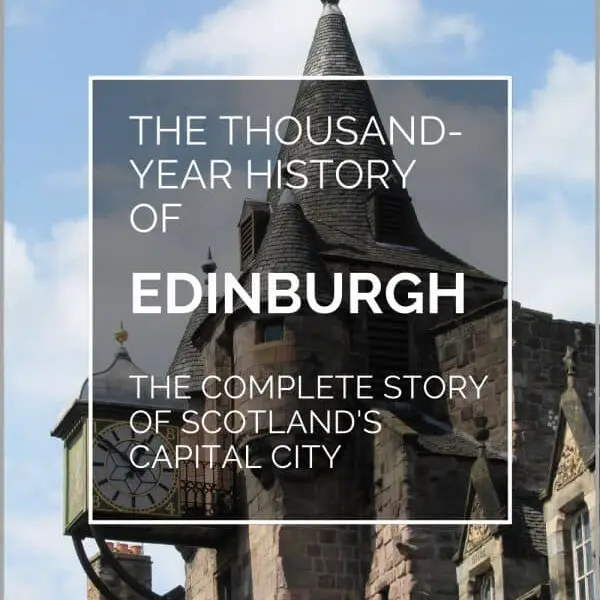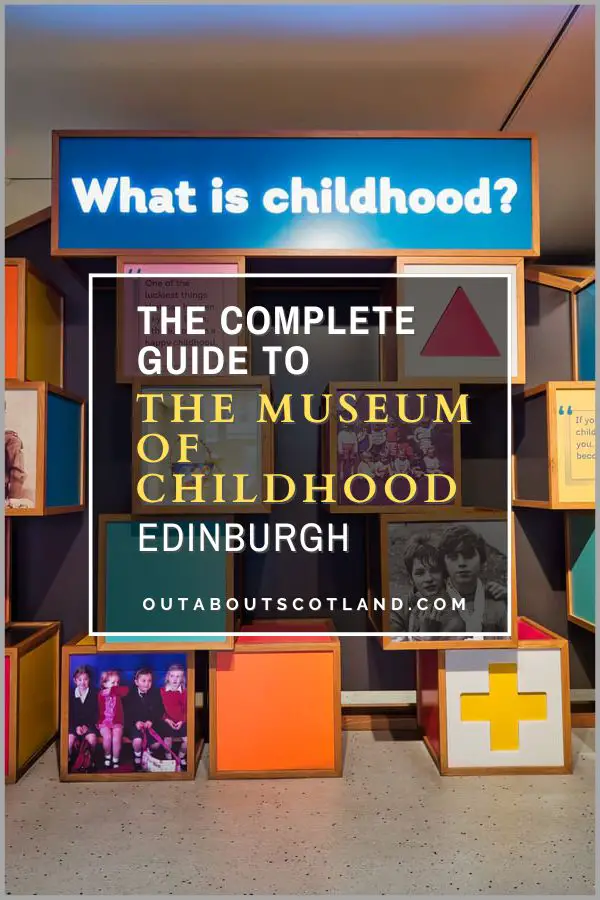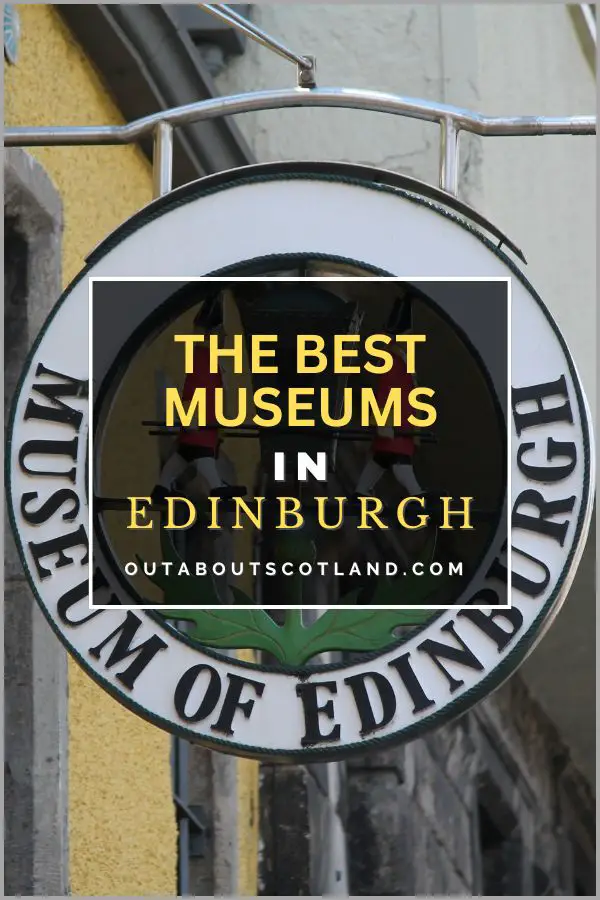Edinburgh has a fascinating history dating back over a thousand years. In this article, you’ll discover the story behind how the city was founded and why it eventually became one of the world’s most-visited tourist destinations.
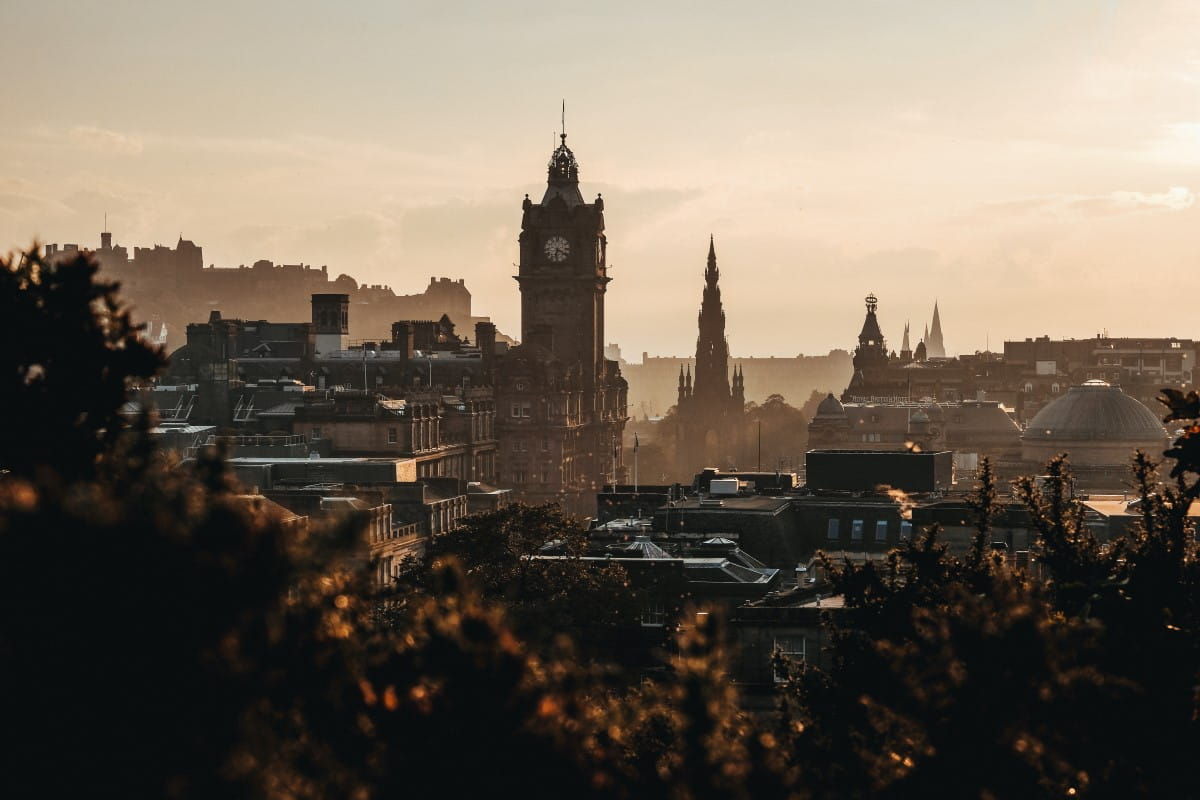
An Introduction to Edinburgh
Although the earliest known settlement in the city of Edinburgh is located at the famous Castle Rock, home of Edinburgh Castle – the remains of the very earliest human inhabitants were discovered in Cramond, dating to around 8,500 BC. While little is known about those people, historians have discovered that the Roman governor Agricola subdued a later tribe known as the Votadini on the outskirts of modern Edinburgh towards the end of the first century.
During the time they were in power, the Votadini became a powerful tribe and quickly established a territory known as Lothian which is now West Lothian, East Lothian and the City of Edinburgh. By the sixth century, four Kingdoms had been established in Scotland:
- To the north, the Picts,
- To the far west, the Scots
- To the west, the Britons
- To the south-east, the Angles.
For hundreds of years these four kingdoms fought each other until in the 9th century the first Scottish King – Kenneth MacAlpin – brought the nations together to create something similar to our modern united Scotland. However, it was his grandson, Duncan I, who became the first true king of Scotland in AD 1035.
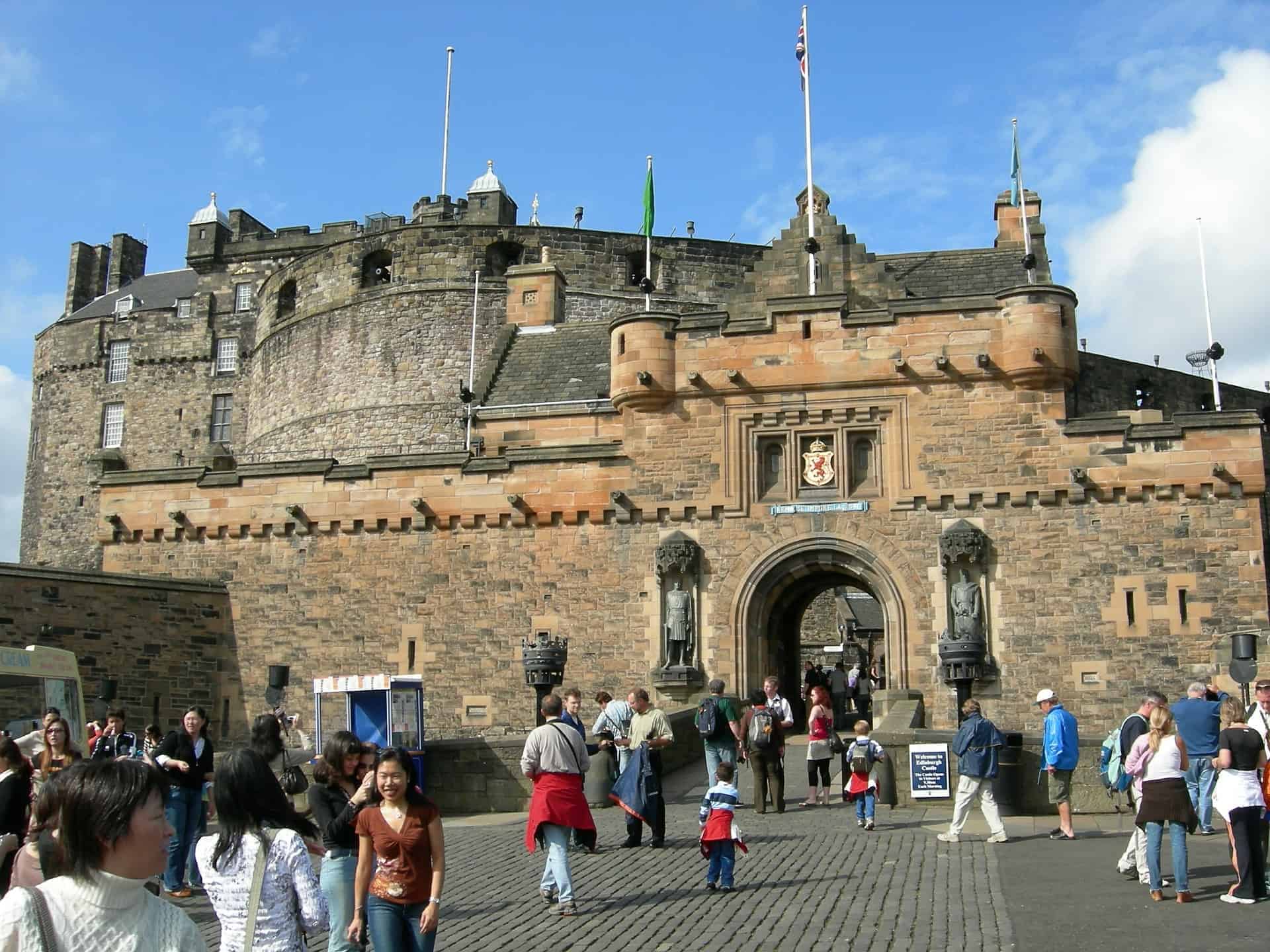
The History of the Kingdom of Northumbria
The Votadini were eventually integrated into other tribes (most notably the Gododdin) and by the 7th century, the Gododdin had built a hill fortification on Castle Rock. This fortification was called Din Eidyn, or Etin, by the Gododdin, which over time changed into the name ‘Edin’.
The rule of the Gododdin began to diminish around AD 638, when Northumbrian forces under the leadership of King Oswald of Northumbria set siege to the hill fort of Etin and brought it under Northumbrian rule. In the following years, the forces of Northumbria grew outward past the northern and western regions of Lothian, and they continued their rule throughout this area of Scotland for several hundred years.
There are records of a church in Edinburgh from around AD 854, and historians conclude that there was an established community in what we know now as Edinburgh by the middle of the ninth century. The significance of this church is that it was probably the forerunner of St. Giles Cathedral which today dominates the landscape of The Royal Mile, the mediaeval road that joins the royal palace at the bottom to the magnificent castle at the top.
Today, St. Giles Cathedral is one of the most-visited historic attractions in Edinburgh and it’s well worth stopping to explore it if you ever find yourself walking along The Royal Mile. If you want to know more about this fascinating tourist attraction you can learn about it (plus many more of the city’s top attractions) in my Guide to the 25 Best Things to do in Edinburgh.
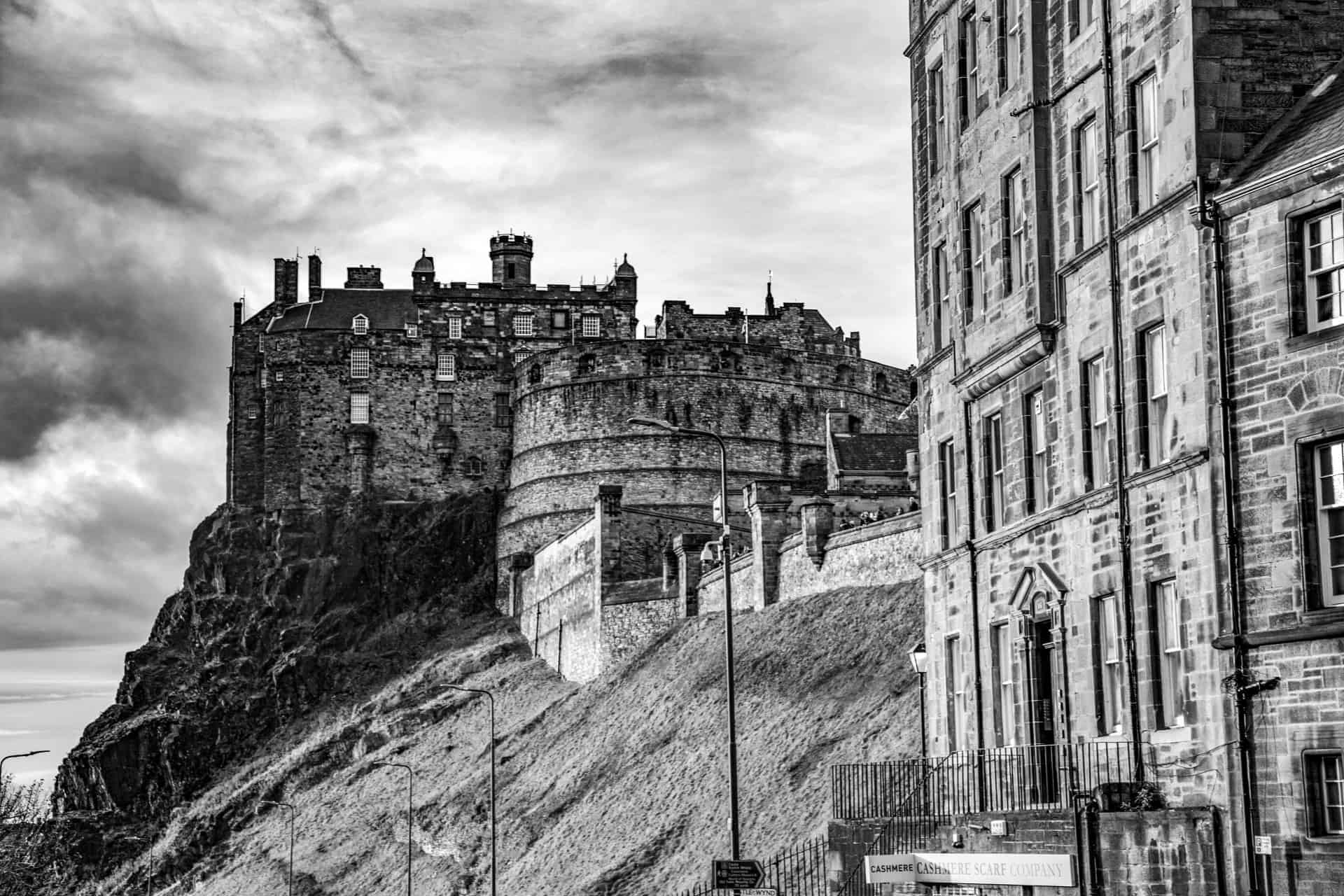
The History of Edinburgh Castle
Early records state that in the 7th century the English captured an area in Scotland that had a fort situated on top of a rock. They named this place Eiden’s burgh, and so began the history of Edinburgh as one of Britain’s major cities.
Historic records of the beginnings of the modern castle are scarce but it does appear that by the middle of the 10th century Northumbrian nobles had decided to make it the location of their permanent residence. That, in turn, meant they had to expand the size of the castle by building fortified walls as protection from neighbouring rivals.
Around this time Britain was under attack by Vikings and many settlements were destroyed by raiding parties. It was the rule of the Vikings that eventually led to the demise of the Northumbrian rule, mainly because the Vikings cut off north Northumbria from the rest of Britain. This led to the Lothians coming under the control of the Kingdom of Scotland, which was initially located to the west of the country.
For many years the Lothians also came under attack from English forces from the south, but it was recorded in the 11th century that the English gave victory to the Scottish King Indulf, after which Edinburgh remained under Scots rule.
The History of Edinburgh’s Old Town
The official founding of Edinburgh as a Scottish borough occurred when the English king Edgar the Peaceful granted Lothian to the king of the Scots, Kenneth the 2nd. But the rule of the Scots wasn’t assured until the Scottish king Malcolm the 2nd defeated the invading Northumbrian forces in AD 1018.
Shortly after this, Malcolm Canmore constructed St. Margaret’s Chapel on Castle Rock for his wife, making it the oldest known structure in Edinburgh. The chapel, while small, is a fascinating building, and you can still see it during a tour of the castle.
The next major Edinburgh construction began in AD 1128, when King David I founded Holyrood Abbey. The Augustinian canons who guarded the abbey are responsible for the district’s name, which derives from the old Scots word “gait,” which means road. “Gate” in this context does not refer to a gate in a wall.
The History of Edinburgh’s Streets
In the 12th century, King David I established the town of Edinburgh as a royal burgh where merchants were given strips of land on the condition that they built a house on it within one year of receiving ownership. These sections of land, known as tofts, were arranged on either side of a long market street that had enclosed yards to the rear, and it was this street that eventually developed into The Royal Mile.
As the decades passed the city went in and out of English ownership during the wars of Scottish Independence between the years 1291 to 1341. During this time, the city, or town as it was then, was comprised of 400 buildings surrounding the fortification on top of Castle Rock.
By the early 16th century Edinburgh had developed into a thriving community of shops, textile weavers, butchers, metal smiths, farmers and many other tradespeople, all serving the needs of the royal court and the rapidly growing local community.
The rise of Edinburgh’s population is well-known by historians and in 1560 it was recorded that the population of the burgh had exceeded 16,000 people. This was at a time when the entire population of Scotland, including the northernmost reaches and the western islands, was estimated at only one million.
By this time the city had become a significant part of the Scottish economy and it soon became known as a centre of legal and medical excellence throughout Europe. The history of Edinburgh was about to become a major part of the history of Scotland itself.
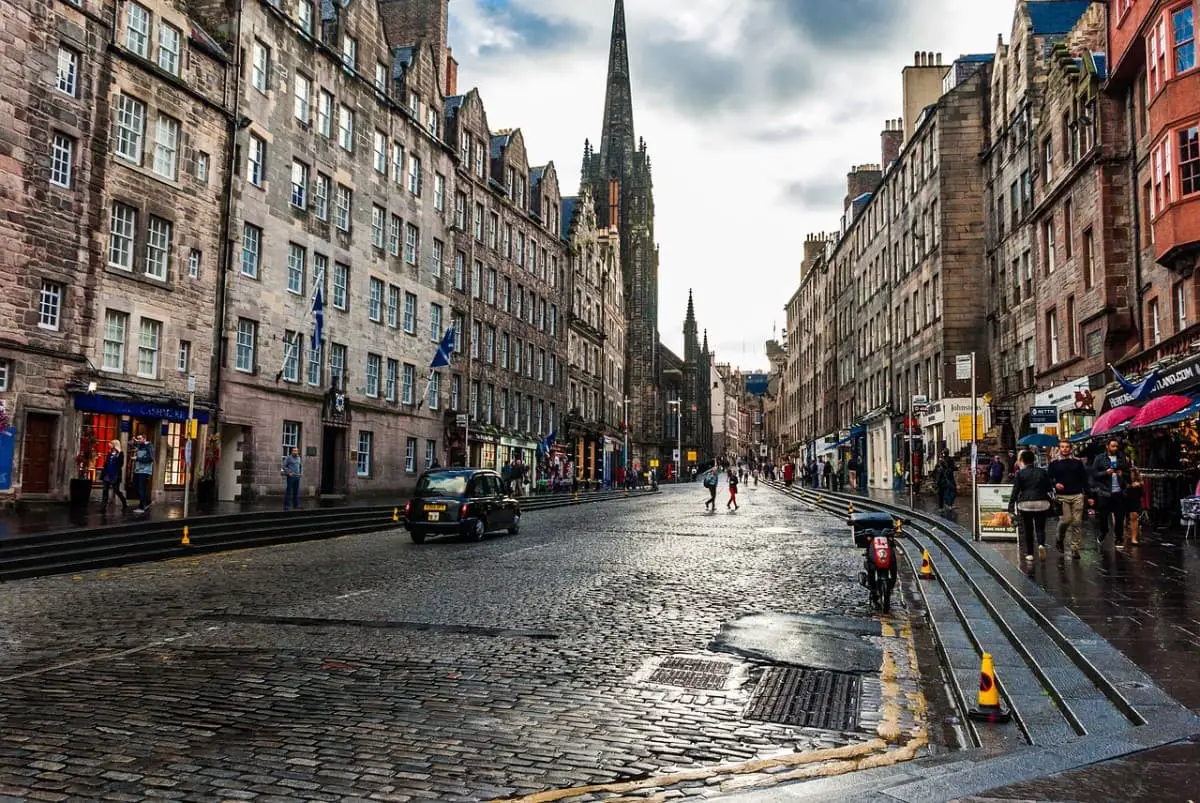
The History of Edinburgh During the Reformation
When Queen Mary I returned to Scotland from France in 1561 she found the city of Edinburgh a terrifying place, gripped with religious fervour. At the time, the Protestant religion had gained traction throughout Scotland, and Mary, being fiercely Catholic, was perceived to be a potential threat to the Protestant power in the country.
Many Scottish nobles were worried that Mary’s influence could make Catholicism the dominant religious force in the nation so they were publicly hostile to her rule. This hostility gradually grew until the now-infamous events at Edinburgh Castle occurred in 1566.
Mary, Queen of Scots
The following tale is one of the defining moments in the history of Edinburgh. At the time, Mary Queen of Scots was married to Henry Stuart, also known as Lord Darnley, in a relationship that was violent and unhappy.
The couple met after being introduced at Holyrood Palace in 1565 and after a short courtship they were married in Mary’s private chapel at the palace and Darnley was proclaimed as an equal to Mary and the King of all Scots. It didn’t take long for Mary to discover that her husband had a ferocious temper and was not only vain and arrogant but was also a cruel drunkard.
Before long rumours were whispered in the royal court that Mary had become embroiled in an extra-marital affair with the Italian courtier David Rizzio, and during this time Mary fell pregnant. Although the father of the child will never be known with certainty, many officials at the time were confident it was Rizzio’s.
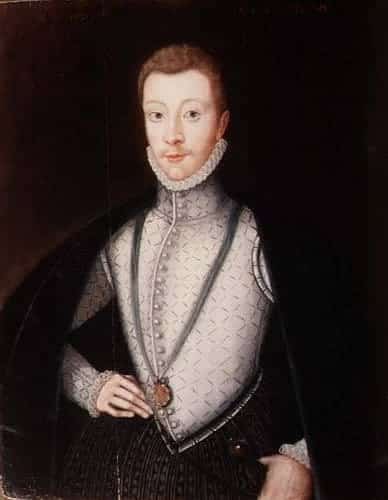
Lord Darnley was furious that he’d been made to look foolish in front of the royal court and so a devious plan was hatched.
In 1566 Darnley, along with a band of rebels and the 3rd Lord Ruthven, overpowered Mary’s guards at the Palace of Holyrood and burst into her private chambers where they found her alone with Rizzio. The rebels demanded that Rizzio be handed over to them, but even though Mary refused, the rebels seized him and stabbed him a total of 56 times in front of the terrified queen.
Rizzio was then stripped of his clothes and jewels and was thrown into a makeshift grave within two hours of his death.
When you visit the palace today you’ll get the chance to visit the very same room where the murder took place, and if you look closely at the wooden floorboards near the windows of that room you can still see the blood-soaked floorboards where Rizzio gasped his last breath.
If you want to explore the castle to see where Rizzio was murdered, read my Complete Guide to Edinburgh Castle which will give you an overview and tell you interesting points of interest to look for while you’re there.
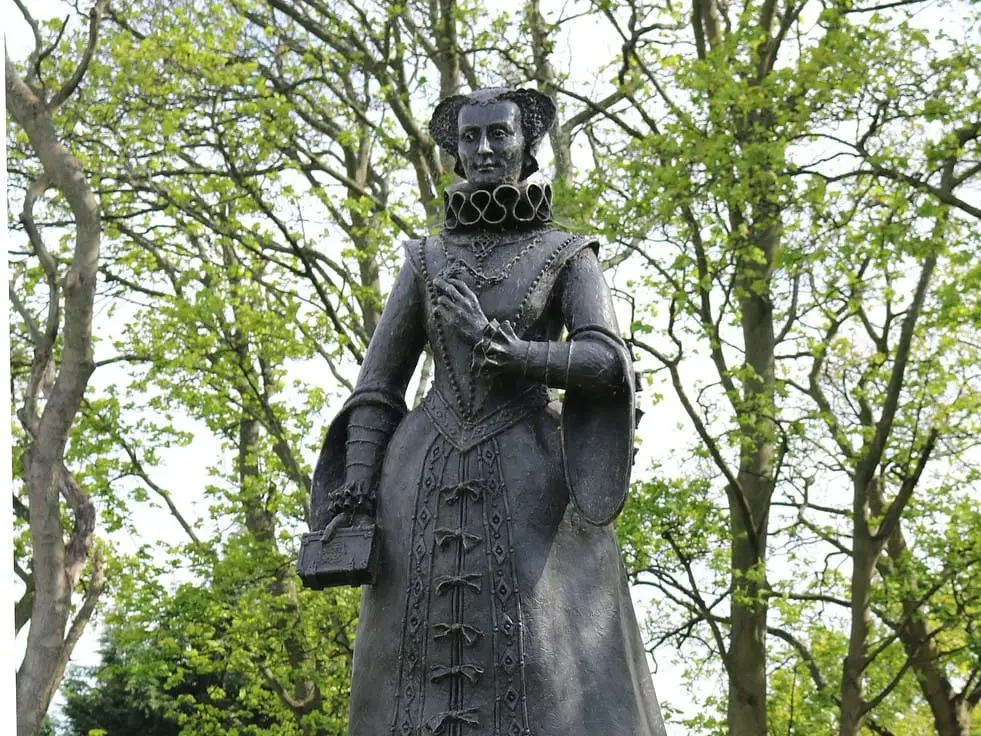
The Death of Mary, Queen of Scots
Fate had its own plans in store for Darnley, and on February 9, 1567, he was killed at the Old Provost’s lodging in Kirk O’ Field in Edinburgh when two explosions ripped through the building. Darnley was found outside with his valet, both dead but with no apparent signs of injuries that could have been caused by the bombings.
The theory of the time was that Mary had finally exacted her revenge for the death of her lover, but to date the truth has never been verified.
Following these incidents, Mary fled Edinburgh, and the downward spiral of her support for the Scottish people culminated in her loss of the Scottish crown before finally being accused of treason against the English Queen Elizabeth II.
The sorry end of her story concludes with her incarceration in England at the orders of the English crown before finally being executed on February 8, 1587. Following Mary’s passing, Scotland underwent a reformation that resulted in the creation of the Presbyterian religion. There were many changes to Scottish society during this time, including plans to put schools in every parish as well as significant reforms to the university system.
These reforms transformed every major discipline in education from literature, science, the arts, music and architecture, which slowly led to Edinburgh becoming the educational powerhouse that it is today.
The long years during the Reformation were hard on Edinburgh, and not only was it ransacked by the English but it also suffered several outbreaks of the plague which decimated a large number of the population. One of the best places to learn about the plague is at the Real Mary Kings Close attraction located on the Royal Mile.
The Union of the Crowns
In 1603 Mary’s son – King James the 6th of Scotland – became the joint ruler of England and Scotland in an act known as the Union of The Crowns. Although Scotland was still regarded as a separate kingdom from England, James set up court in London, where he controlled Scotland through a privy council in Edinburgh.
An uneasy relationship continued for many years, even during the English civil war, when the Commonwealth forces of Oliver Cromwell occupied Edinburgh, much to the annoyance of the royalist Scottish army. By this time, the city was enclosed by defensive walls built as protection from attempts by English armies to invade. This gave rise to an extreme lack of land, which in turn gave town planners only two options to continue building in the city.
Because they couldn’t construct outwards, they had to either build down or they had to build up, which is why Edinburgh is home to so many historic multi-story buildings.
If you wander around the streets near the Royal Mile today, you’ll see many tenement buildings from the 17th century that are quite unlike any others in Europe from that century. They are, in fact, some of the world’s earliest examples of high-rise tower blocks, with some of the buildings of the period reaching an incredible 15 stories high.
It’s widely considered that Edinburgh’s Old Town architecture is an exceptional feat of engineering, especially since the architects of the time had no knowledge of stresses and forces like modern architects do. Although the majority of these high-rise blocks were demolished in the Victorian era, you can still see examples of multi-story buildings throughout the Old Town.
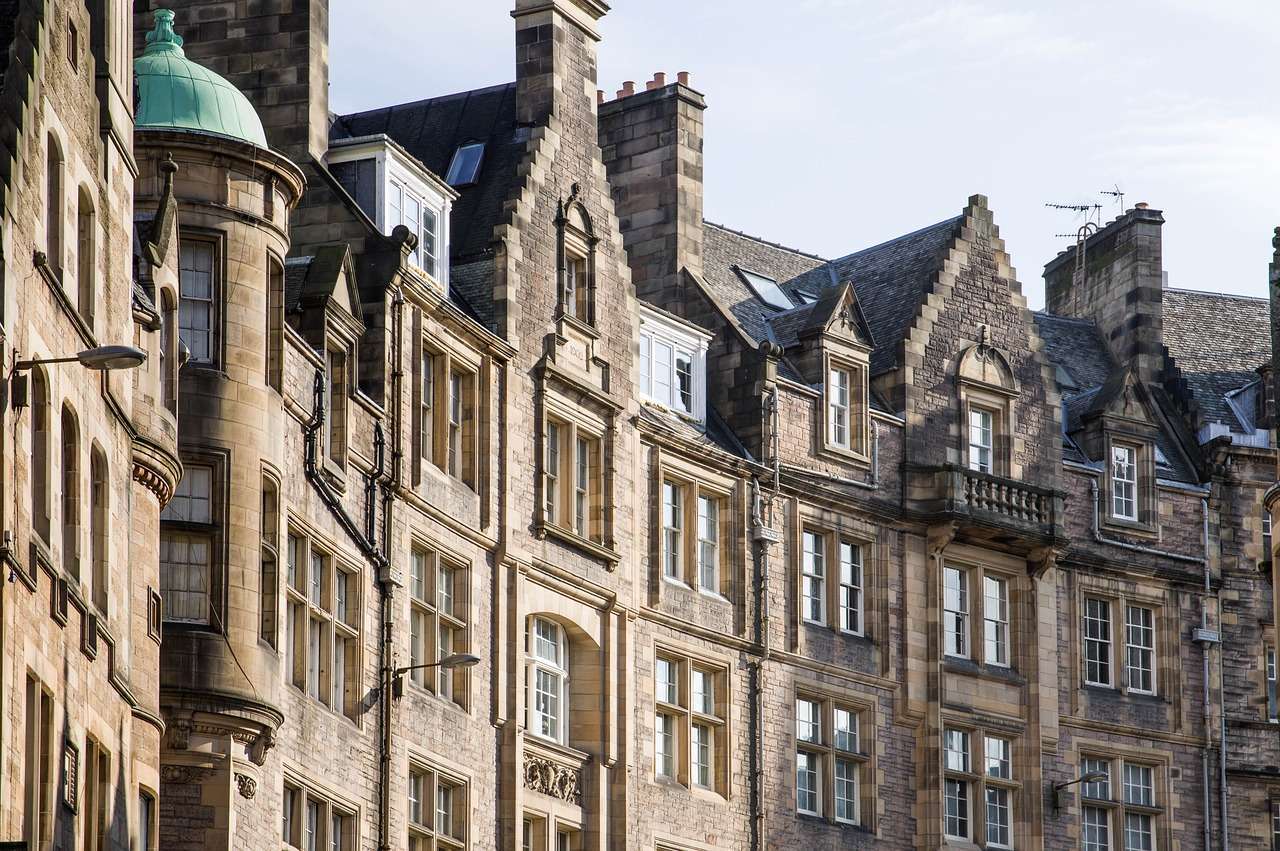
The Acts of Union
With the passing of the Acts of Union in 1707 England and Scotland finally merged, with the two great nations maintaining their own identity but now known as The Kingdom of Great Britain. However, the fact that the seat of power still resided in London did not sit well with the Scots people, and for many years, civil unrest and riots consumed Edinburgh.
In the following decades, the city established itself as one of the most important centres of commerce in Britain. Stories of successful merchants from all over the nation attracted people to the city, and by the end of the 17th century, it had a population of more than 50,000.
The History of Edinburgh in the 18th Century
By the early 1700s Edinburgh had become overcrowded, polluted, and had developed an incredibly foul smell – which led to the city earning its nickname ‘Auld Reekie’. Although this name lingers today, thankfully the smell doesn’t due to the rejuvenation of the city streets and buildings by 18th-century town councillors who made plans for Edinburgh to replicate the grandeur of London.
However, the Jacobite uprisings of 1745, when the Highland Army under Prince Charles Edward Stuart occupied the city before traveling south into England in an effort by the “Bonnie Prince” to claim his right to the throne, were the force that really shaped Edinburgh into the city that it is today.
The plan failed, and the Jacobites were eventually pushed back into Scotland until they were finally defeated at the Battle of Culloden on 16th April 1746.
Culloden and the Jacobite Downfall
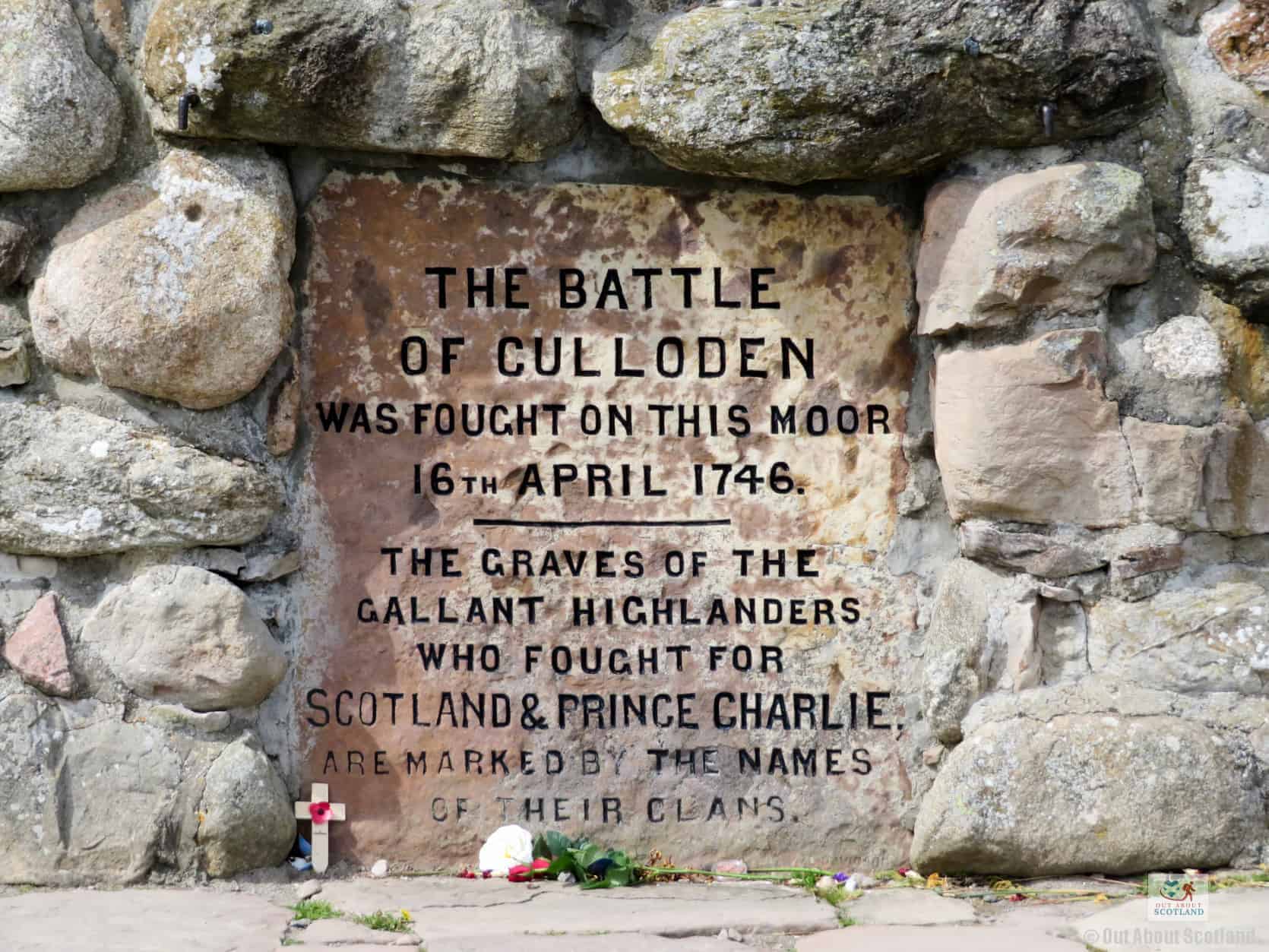
The battle of Culloden was one of the defining moments not only in the history of Edinburgh but also in the history of Scotland, and the repercussions of the event moulded the nation for many years after.
The conflict was the final confrontation between the Jacobites and the loyalist troops under the command of the Duke of Cumbernauld and it sealed the demise of the House of Stuart in their attempt to overthrow the ruling House of Hanover.
Although the battle only lasted for around an hour it was catastrophic for the Stuart forces and in the short time that it raged at least 2,000 Jacobites were either killed outright or were mortally wounded, in contrast to only 300 Hanoverian loyalists that were killed.
Because many of the Jacobite forces were Highlanders the British government’s repercussions after Culloden led to the end of the Scottish clan system when highland traditions including the wearing of clan tartan were outlawed. It was to be many decades before the wearing of clan tartan in Scotland became popular again.
You can read more about the Battle of Culloden and find out how to visit the battlefield in my Complete Guide to the Battle of Culloden Memorial.
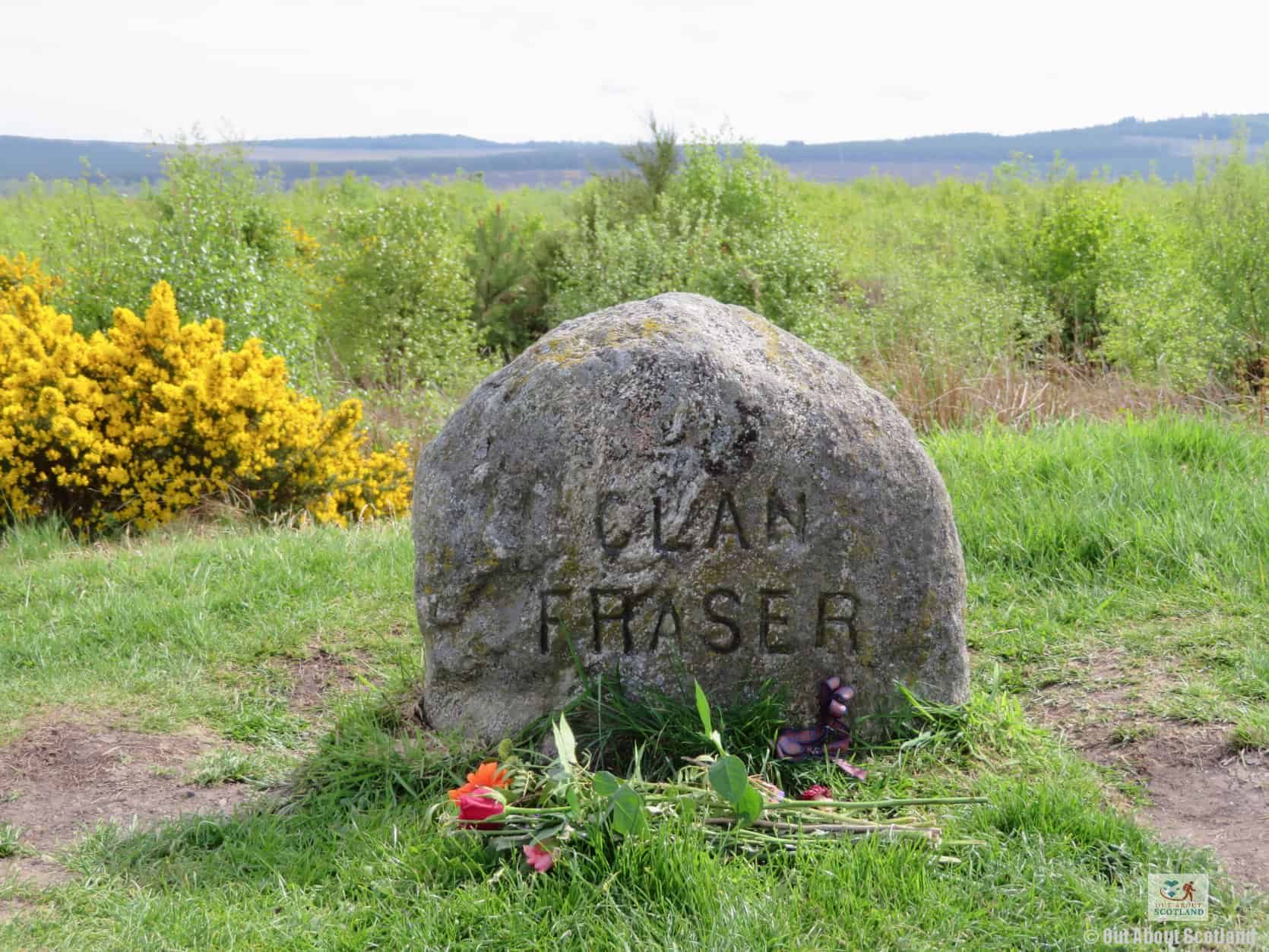
Edinburgh’s New Town
After the fall of the Jacobites, Edinburgh’s town council were keen to show their union with their English political masters so they began plans to expand and renovate the city in a style similar to the layout and architecture of London.
The infrastructure of the roads did little to facilitate trade between Edinburgh and the rest of the United Kingdom during these years as health issues plagued the city and drove away merchants.
Because of this, the Edinburgh Lord Provost decided to build a new town on the land north of Edinburgh, so in 1767 a competition was held to determine the best design. The winner was a young architect named James Craig, who ultimately became responsible for the beautiful streets of Edinburgh’s New Town.
Under the instruction of James Craig, a team of architects proposed the single most significant upgrade to any city of the era. The improvements included a new merchant’s exchange hall, new legal courts and libraries, new housing for the middle classes towards the north and south of the Old Town, and a new public garden area below the castle.
This was a particularly impressive endeavour as the proposed area for the garden was under several feet of water in the Nor Loch, a body of water that had existed under Castle Rock for thousands of years. But the Edinburgh engineers rose to the task, and the loch was drained to create what is now known as Princes Street Gardens.
As the New Town developed more and more educated professionals began to move to the city to practice and before long Edinburgh became world-renowned as a centre of excellence for medicine and law. But as the New Town flourished, the Old Town fell into disrepair, and the unfortunate residents who lived there spiralled into a destitute life of unsanitary conditions and poorly maintained buildings.
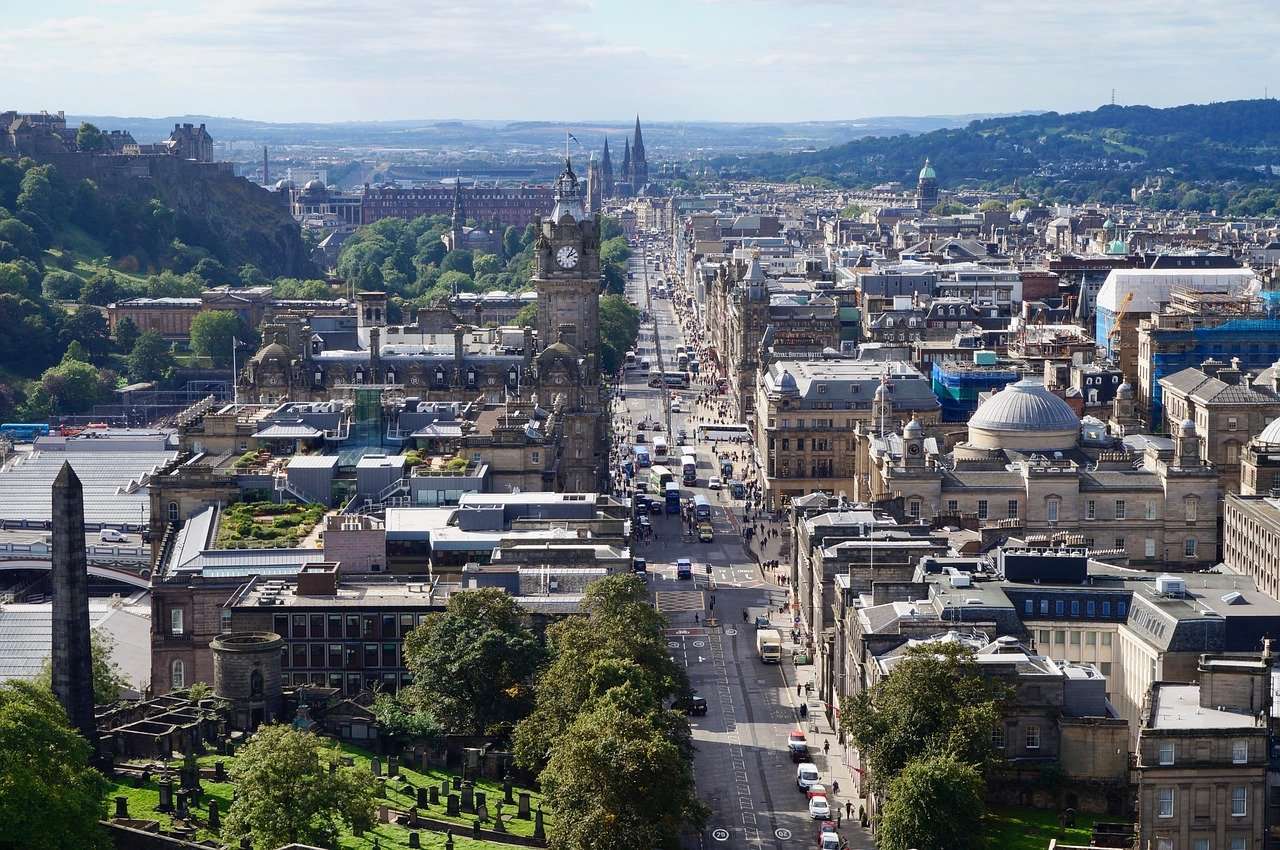
The Scottish Enlightenment
Although the Scottish union with England meant that many members of the political classes moved to London, Scottish law was kept entirely under the jurisdiction of Scotland and so legal professions thrived in the city.
With the growing middle classes, universities were built to educate the next generation of professionals and Edinburgh soon became the first-class centre of learning in Europe. The rise of these educated elite classes introduced significant advances in philosophy, science, medicine, and economics, which made Edinburgh world-famous as a centre of learning.
Many important intellectuals at the time met in Edinburgh to contemplate the advancement of humanity and it was this thinking that led to the era becoming known as the Age of Enlightenment.
These great men included David Hume, John Playfair and William Robertson, who frequently met at The Select Society which eventually lead to the establishment of the Royal Society of Edinburgh in 1783, with one of the founding members being the great economist, Adam Smith.
It was around this time that the city gained its other nickname as the ‘Athens of the North’, a name that’s still used today to describe both the architecture of the city and its significance as a centre for intellect and learning.
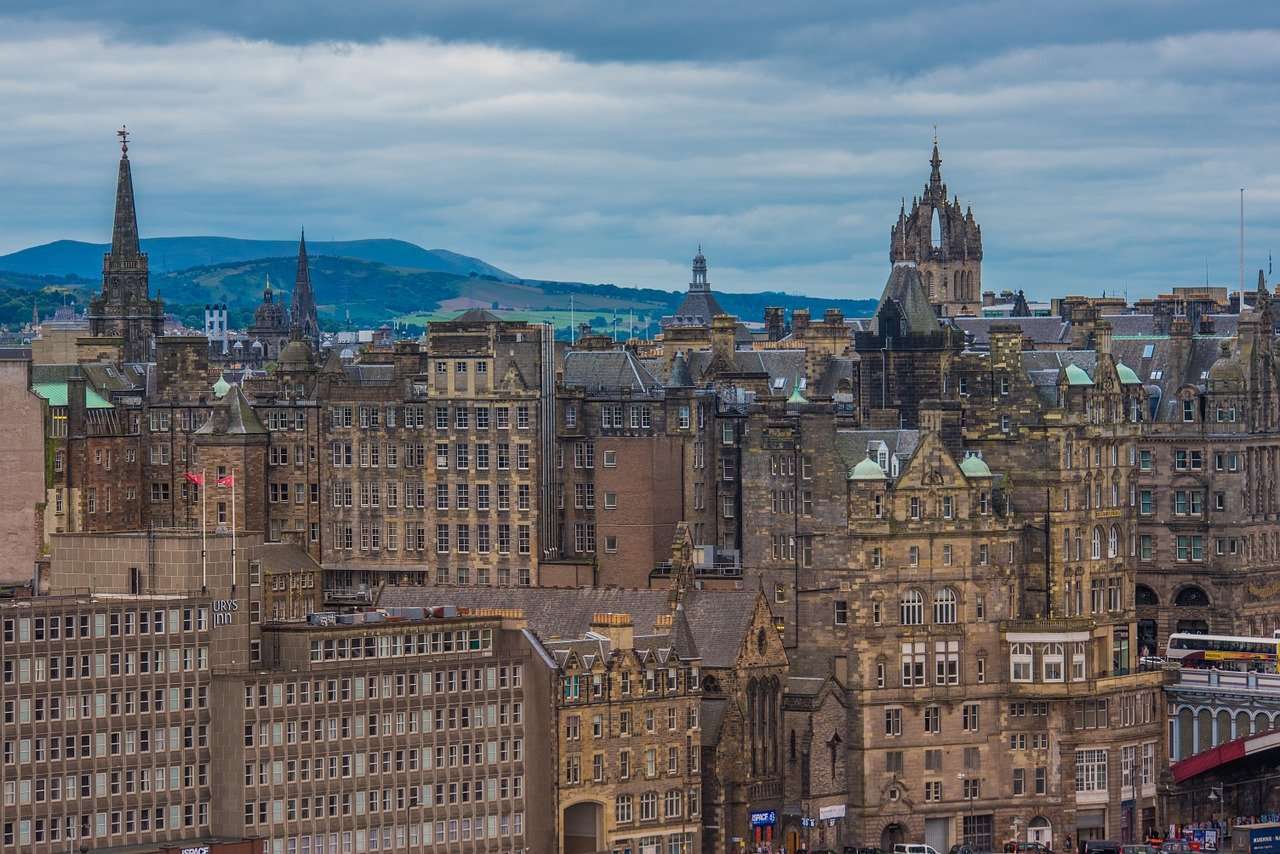
The History of Edinburgh in the 19th Century
Although Edinburgh had a rich industrial heritage, by the 1800s it was overtaken by Glasgow as one of the leading manufacturing centres of Britain.
While Edinburgh still had traditional industries like printing, brewing, and distilling, Glasgow had trade links with the Americas thanks to its location on the west coast of Scotland, and shipping routes to North America powered Glasgow to prosperity for the next two hundred years.
Edinburgh, in turn, became a city for the educated classes who had both an increasing wealth and a desire to spend it. In time the New Town developed into shopping districts and high-end housing, which attracted wealthy residents from all over the UK.
However, for the inhabitants of the dilapidated Old Town, life continued unchanged as it had done for hundreds of years, with increasingly unhealthy conditions leading to one of the highest mortality rates in Europe. After a damning report on the sanitary conditions in Edinburgh in 1865, the town council began making improvements to the Old Town to transform it into the modern district that we see today.

Many of the ramshackle buildings were torn down and replaced with new structures that kept the mediaeval character of the city but were in much better condition for the residents.
The removal of residents from overcrowded slums and placement of them in affordable, low-cost housing was the other significant improvement, and within a few years, the death rate of Edinburgh’s poor decreased to levels comparable to those of their wealthy counterparts in the New Town.
One further development that changed the city was the introduction of railways which saw a major line built between the two capital cities of Edinburgh and London, with the final station ending directly at Princes Street in Waverley station.
Furthermore, many famous Edinburgh landmarks were built at this time, including; The Nelson Monument in 1816, The National Monument in 1829, The Scott Monument in 1846, The National Gallery in 1857, The Royal Infirmary in 1870 and The National Portrait Gallery in 1889.
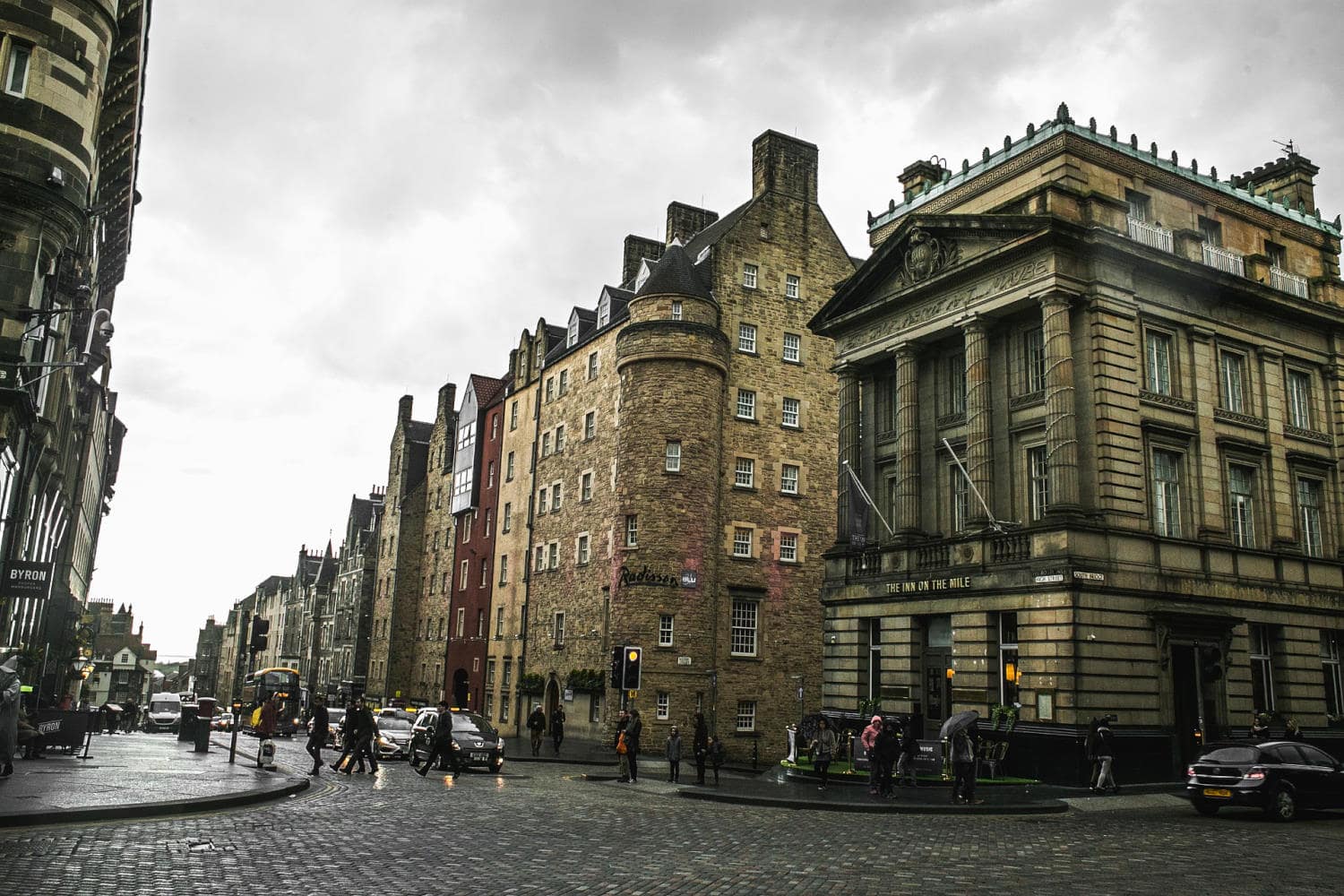
Edinburgh in the 20th Century and Beyond
Despite the fact that German bombs decimated many British cities during World War II, Edinburgh largely escaped unharmed. The main reason for this was that the lack of industry meant that there was no military advantage in bombing the city, so the ancient buildings that are part of Edinburgh’s heritage remained pretty much intact.
The final alterations occurred when the remaining slums were cleared in the 1960s to be replaced by new universities and modern housing, with the city ultimately morphing into the combination of preserved historic buildings and modern buildings that we see today. Another major development happened in 1999, when the Scottish Parliament finally re-opened in a brand-new building across the road from Holyrood Palace after a gap of 292 years.
Recent advancements have seen financial institutions relocate to the city, and Edinburgh is now regarded as the second major British financial centre, beaten only by London.
Despite Edinburgh’s turbulent past due to war, poverty, and scandal, the city’s future is extremely promising. In addition to becoming a top tourist destination in the world, it also attracts a large number of new residents each year who are eager to take advantage of the opportunities and history the city has to offer.
You might also like to discover a bit more about Edinburgh’s dark history, so take a look at my article about Murders and Executions in Edinburgh where I cover some of the more infamous events that happened in the city over the years.
What was Edinburgh known for?
Edinburgh was (and still is) known for the castle that stands at the top of the Royal Mile on Castle Rock. This fortification was a royal stronghold for hundreds of years which eventually led to the city being given capital status in 1437.
What was the original name of Edinburgh?
The original name of Edinburgh was ‘Eidyn’s burgh’, referring to the fortification of the 7th century King Edwin of Northumbria.
Who was Edinburgh founded by?
Edinburgh was officially founded as a royal burgh by King David I in the 12th century.
Why is Edinburgh so rich?
Edinburgh is historically home to many wealthy people due to its status as a centre for learning thanks to the pioneering academic programs from Edinburgh University, especially in the field of medicine.
As the capital of modern Scotland, it is also the main seat for the political classes and is used as the country’s main financial hub with banks such as the Royal Bank of Scotland which has its headquarters in Edinburgh.

